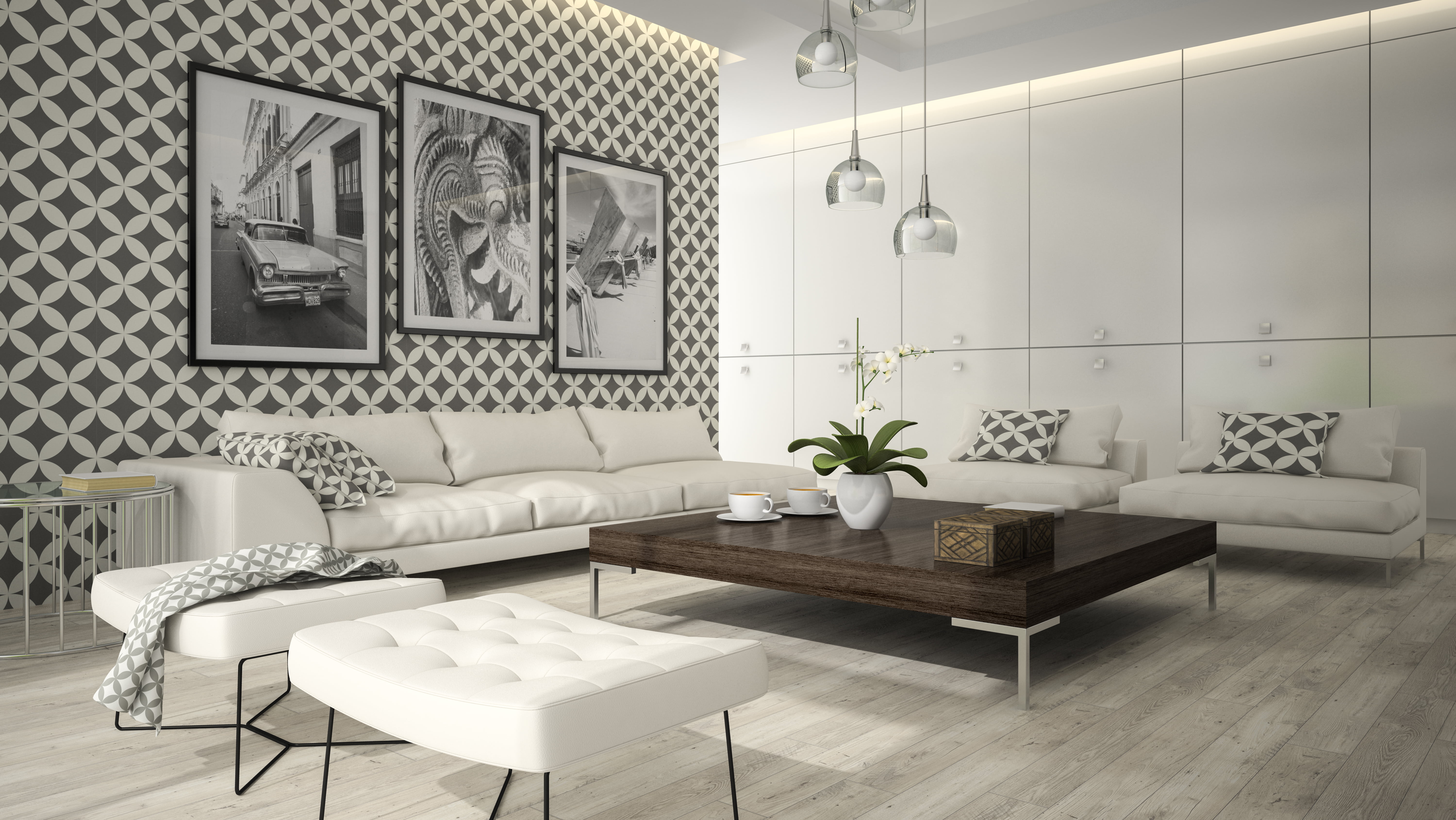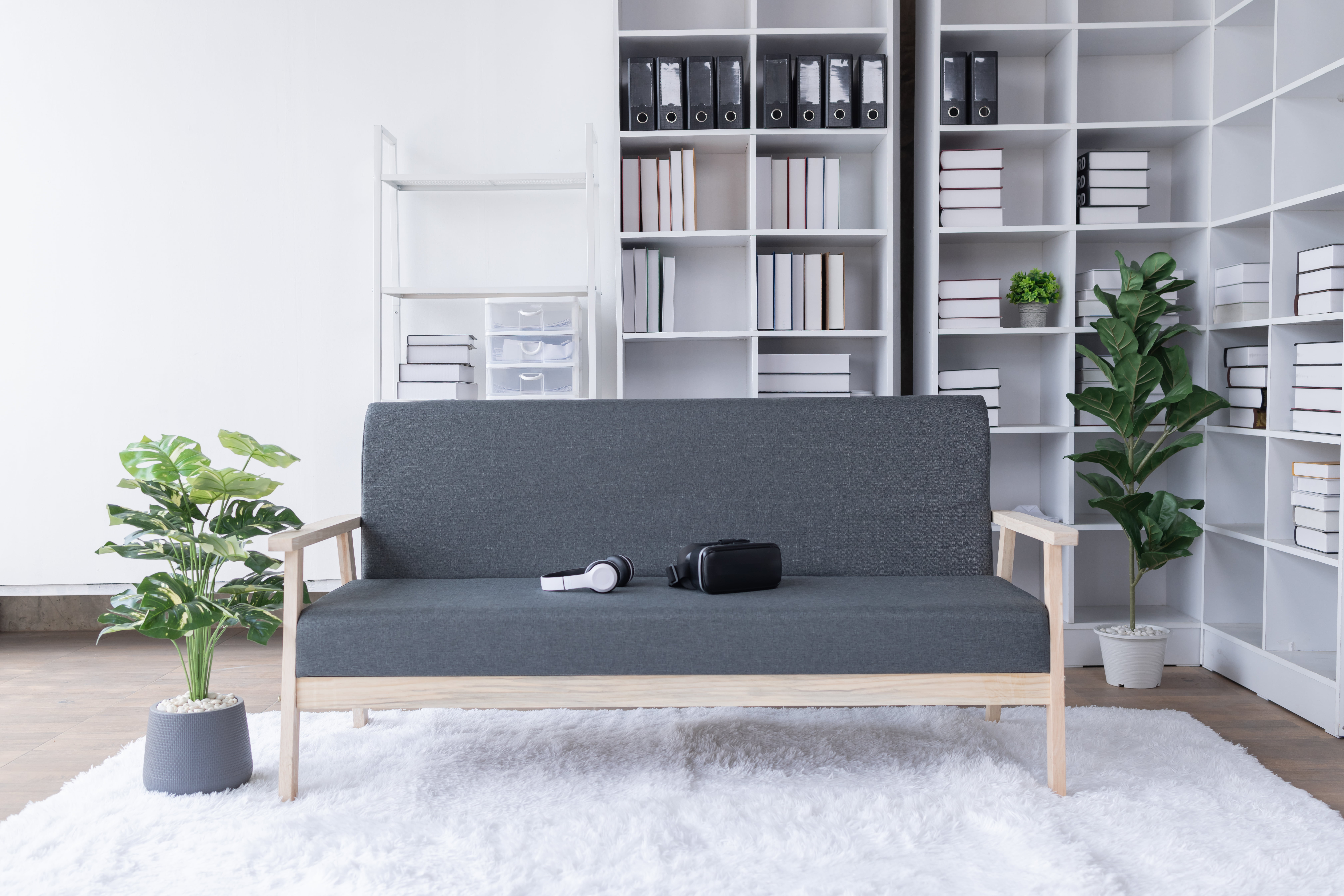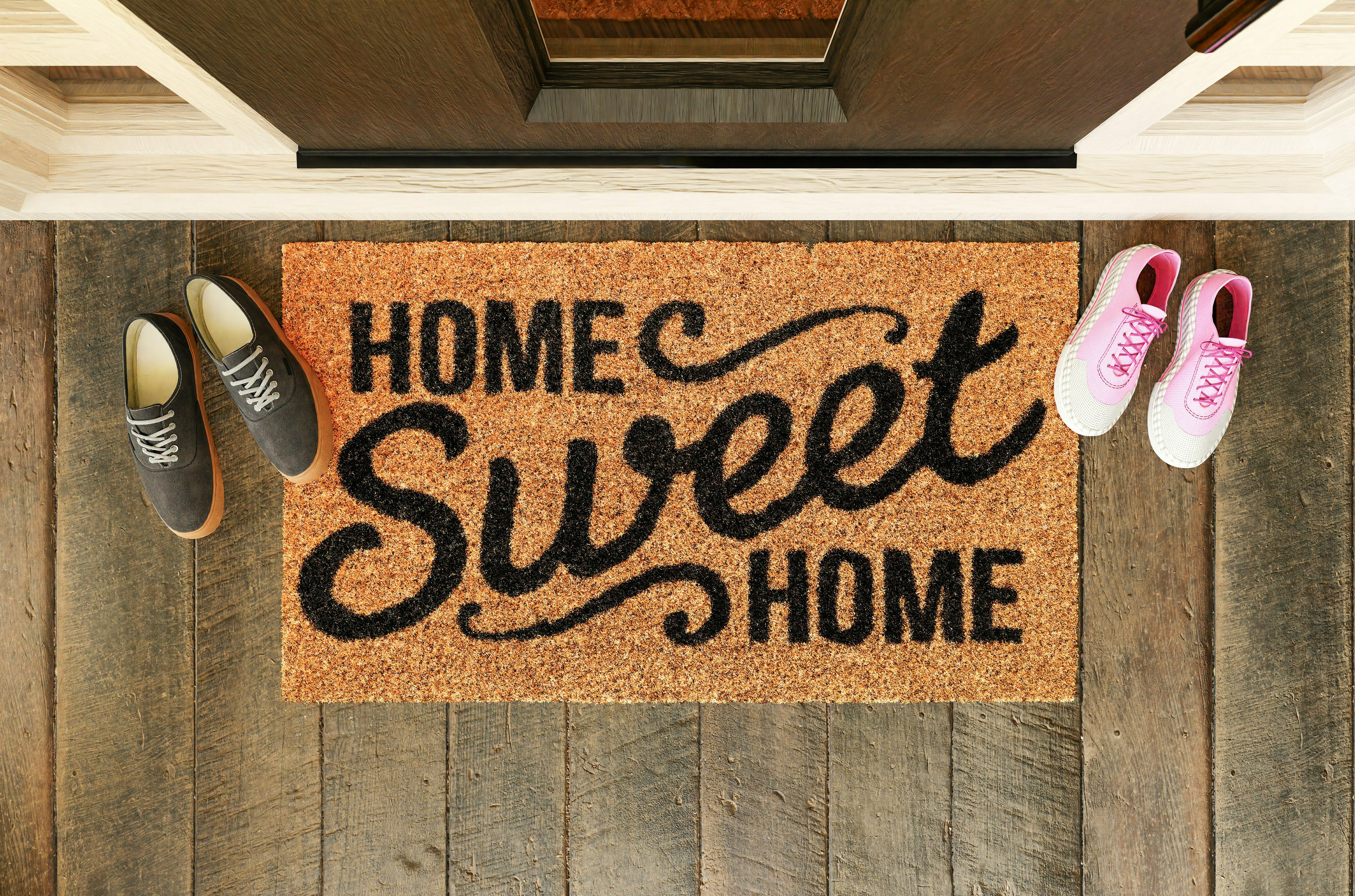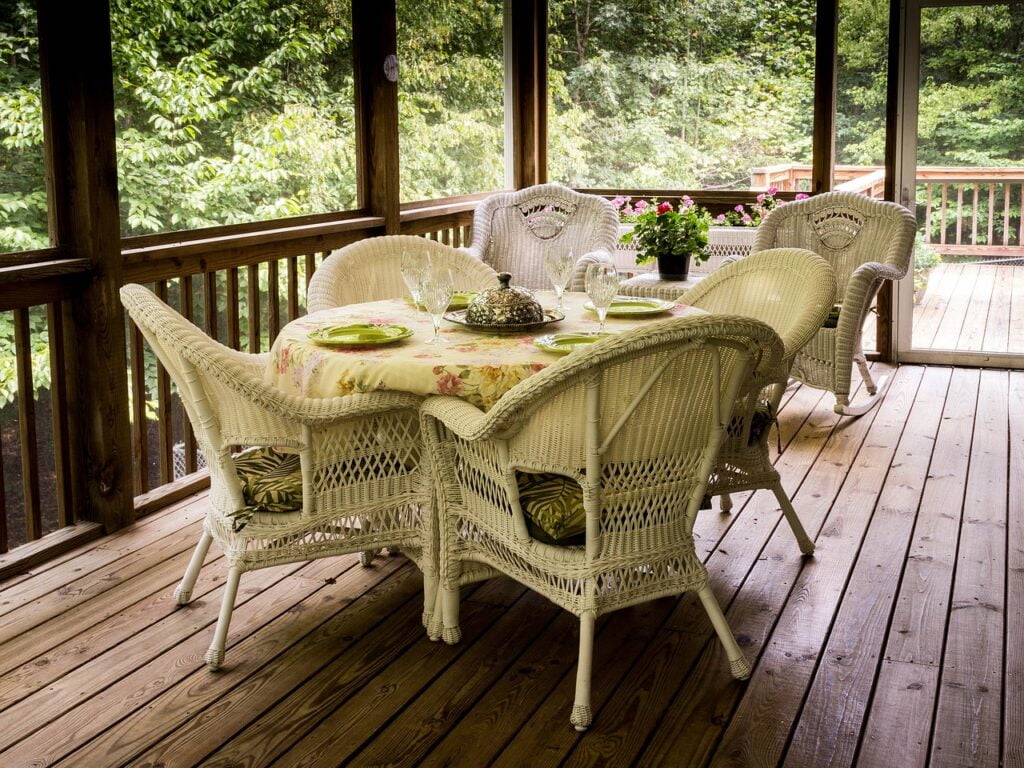So, you’re looking to make your home a cozy and welcoming sanctuary? Well, you’re in the right place! In this article, we’ll explore some simple and effective ways to transform your living space into the haven of comfort and hospitality you’ve always dreamed of. From choosing the right colors and textures to incorporating personal touches and maximizing functionality, we’ll cover it all. Say goodbye to a cold and unwelcoming abode, and get ready to create an environment that will leave both you and your guests feeling warm and at ease. Let’s get started on your journey to a more comfortable and inviting home! Creating a more comfortable and inviting home is all about paying attention to details and incorporating elements that will make you and your guests feel at ease. From choosing the right colors to arranging furniture for comfort, enhancing lighting, adding cozy textures, and adding personal touches, there are many ways to transform your space into a warm and welcoming sanctuary. In this article, we’ll explore various techniques and ideas that can help you achieve the cozy and inviting atmosphere you desire.
Choosing the Right Colors
Consider the Mood
When it comes to choosing colors for your home, it’s important to consider the mood you want to create in each room. Colors have the power to evoke certain emotions and set the tone for a space. For example, warm colors like red, orange, and yellow can create a cozy and energetic ambiance, perfect for social spaces like living rooms and dining areas. On the other hand, cool colors like blue, green, and purple can promote a calm and serene atmosphere, making them ideal for bedrooms and bathrooms.
Use Warm Colors
If you want to create a cozy and welcoming environment, incorporating warm colors into your decor is a great starting point. Warm colors have the ability to make a space feel intimate and comfortable. Consider using warm hues for your walls, such as earthy tones like terracotta, rich browns, or warm neutrals like beige and cream. You can also incorporate warm colors through furniture and accessories, such as accent chairs, throw pillows, and rugs.
Incorporate Cool Colors
While warm colors can create a cozy atmosphere, incorporating cool colors can bring a sense of serenity and tranquility to your home. Cool colors work well in spaces where you want to promote relaxation, such as bedrooms or bathrooms. Consider using shades of blue, green, or lavender for your walls, bedding, or curtains. Cool-colored accents like artwork or decorative accessories can also add a refreshing touch to your space.
Opt for Neutral Shades
Neutral shades are a versatile choice that can create a sophisticated and timeless look in any room. They provide a neutral backdrop, allowing you to easily change the style or theme of your space without having to repaint the walls. Shades like white, gray, and beige work well in almost any style of decor and can be complemented with pops of color through furniture, artwork, or accessories. Neutral colors can also make a space feel open and airy, enhancing the overall comfort and inviting atmosphere.
Don’t Forget About Accent Colors
While choosing the right main colors for your home is important, accent colors can add depth and personality to your space. Accent colors are typically used in smaller doses to provide visual interest and create focal points. Consider selecting accent colors that complement the main color scheme of each room. For example, if you have a neutral color palette, vibrant accent colors like red or yellow can create a striking contrast. On the other hand, if your main colors are warm, using cooler accent colors like green or blue can create a balanced and harmonious look.
Arranging Furniture for Comfort
Create Zones
When arranging furniture in your home, it’s essential to create distinct zones for different activities. This not only promotes a better flow within the space but also creates a sense of purpose and functionality. Identify the main activities that will take place in each room and arrange the furniture accordingly. For instance, in the living room, create a cozy seating area with a sofa and armchairs facing each other, and a coffee table in the center. In the dining room, position the table and chairs in a way that allows comfortable seating and easy movement around the area.
Consider Traffic Flow
In addition to creating zones, it’s crucial to consider the traffic flow within each space. Ensure there is enough room for people to move around without bumping into furniture or feeling cramped. Ideally, there should be clear pathways and easy access to various parts of the room. Avoid placing furniture in a way that blocks doorways or interrupts the natural flow of movement. By optimizing traffic flow, you can create a more comfortable and inviting environment for both you and your guests.
Arrange Furniture for Conversations
One of the key elements of a comfortable home is the ability to engage in conversations with ease. When arranging furniture, consider incorporating seating arrangements that promote interaction and communication. Arrange chairs and sofas in a way that encourages face-to-face conversations rather than having all furniture against the walls. Positioning seating around a focal point, such as a fireplace or a coffee table, can also create a cozy and inviting atmosphere.
Prioritize Comfortable Seating
Comfortable seating is essential in creating a welcoming and cozy environment. Invest in furniture that not only looks good but also provides comfort and support. Sofas and chairs with plush cushions and ergonomic designs can make a significant difference in the overall comfort of your space. Don’t overlook the importance of seating height and depth in relation to your body proportions. Additionally, consider adding accessories like throw pillows and blankets to enhance the comfort and inviting feel of your seating areas.
Allow for Ample Walking Space
While arranging furniture for comfort is crucial, it’s equally important to consider the practical aspects of your space. Make sure there is sufficient walking space around furniture to allow for easy movement. Avoid overcrowding a room with too much furniture or oversized pieces that dominate the space. Striking the right balance between comfort and functionality will create a more relaxed and comfortable environment that feels inviting to both you and your guests.
Enhancing Lighting
Let in Natural Light
Natural light can have a significant impact on the overall comfort and ambiance of your home. Take advantage of natural light by allowing as much of it in as possible. Keep windows unobstructed by heavy curtains or blinds during the day to let sunlight flood your space. Natural light not only brightens up your home but also provides warmth, enhances mood, and creates a sense of openness. It is particularly important to prioritize natural light in rooms where you spend a lot of time, like the living room or home office.
Choose the Right Window Treatments
While natural light is beneficial, you also want to have the option to control the amount of light coming into your space. Choosing the right window treatments can help you strike the perfect balance between privacy, light control, and enhancing the overall comfort of the room. Consider using sheer curtains or blinds that can be easily adjusted to let in natural light while still providing privacy when needed. For rooms where complete darkness is required, such as bedrooms, opt for blackout curtains or shades.
Use Layered Lighting
To create a cozy and inviting atmosphere, it’s important to have a variety of lighting options that can be adjusted according to your needs and preferences. Layered lighting involves combining different types of lighting, such as ambient, task, and accent lighting, to create a balanced and well-lit space. Ambient lighting provides overall illumination and can be achieved through ceiling-mounted fixtures or wall sconces. Task lighting focuses on specific areas where you need more light, such as reading lamps or under-cabinet lighting in the kitchen. Accent lighting is used to highlight focal points or architectural features, such as spotlights on artwork or decorative fixtures.
Utilize Task Lighting
Task lighting plays a crucial role in creating a comfortable and functional home. It is essential for completing specific tasks like reading, working, or cooking. Incorporate task lighting in areas where you need focused light, such as desk lamps in your home office or bedside reading lamps in the bedroom. Adjustable task lighting allows you to customize the direction and intensity of light, providing optimal comfort and functionality.
Create Ambient Lighting
Ambient lighting sets the overall mood and ambiance of a room. It provides a soft and warm glow, creating a relaxed and inviting atmosphere. Use ambient lighting fixtures like chandeliers, pendant lights, or wall sconces to establish a pleasant and cozy environment. You can also use dimmer switches to adjust the intensity of ambient lighting, allowing you to create a more intimate and soothing atmosphere when desired.
Creating Cozy Textures
Add Plush Fabrics
Incorporating plush fabrics into your home decor can instantly add a cozy and inviting touch. Choose fabrics that are soft and tactile, such as velvet, chenille, or faux fur, for pillows, throws, and curtains. These materials not only provide visual warmth but also offer a comfortable and cozy texture that invites you to curl up and relax. Consider adding plush fabrics to your seating areas, bedrooms, or reading nooks to enhance comfort and create a cozy atmosphere.
Incorporate Soft Throws and Pillows
Soft throws and pillows are not only functional but also serve as decorative elements that can instantly add warmth and comfort to any space. Use them to accessorize your sofas, armchairs, or beds. Opt for fabrics like cashmere or fleece for throws, as they provide a luxurious and cozy feel. Mix and match different textures and patterns with your pillows to create a visual interest and inviting environment.
Use Natural Materials
Incorporating natural materials into your home decor can add warmth and a sense of coziness. Consider using materials like wood, rattan, or woven fibers for furniture, such as coffee tables, chairs, or storage units. These materials add a natural element to your space and create a warm and inviting atmosphere. Natural materials can also be incorporated through accessories like baskets, planters, or decorative objects, adding depth and texture to your home.
Consider Rugs and Carpets
Rugs and carpets not only add warmth to your space but also provide a cozy and comfortable feel underfoot. Choose rugs with soft textures and plush pile, such as shaggy or wool rugs, for living rooms, bedrooms, or hallways. Additionally, rugs can help define different areas within a room, creating a sense of coziness and functionality.
Experiment with Textured Wallpapers
Textured wallpapers can add depth and visual interest to your walls, making them a great option for creating a cozy and inviting environment. Consider using wallpapers with textures like grasscloth, linen, or faux wood to add warmth and dimension to your space. Textured wallpapers work well in bedrooms, living rooms, or home offices, where they can create a focal point or enhance the overall ambiance of the room.

Adding Personal Touches
Display Sentimental Items
Adding personal touches to your home decor not only makes the space feel more inviting but also reflects your unique personality and experiences. Display sentimental items like photographs, trinkets, or souvenirs from your travels. These items not only serve as conversation starters but also add a personal touch and warmth to your space. Consider creating a gallery wall with framed photos or dedicating a shelf or tabletop to showcase your most cherished belongings.
Showcase Family Photos
Displaying family photos is a simple yet effective way to create an inviting and personal atmosphere in your home. Whether you opt for a gallery-style collage or individual frames, family photos can be a beautiful reminder of cherished memories and loved ones. Choose frames that complement your decor style and arrange the photos in a way that is visually appealing and meaningful to you and your family.
Incorporate Personal Collections
If you have a specific collection of items that holds sentimental value to you, consider incorporating them into your home decor. Whether it’s vintage books, vinyl records, or antique vases, displaying your collections not only adds a personal touch to your space but also sparks interest and creates a more inviting atmosphere. Look for creative ways to showcase your collections, such as using floating shelves, glass display cases, or shadow boxes.
Include Artwork and Wall Decor
Artwork and wall decor can significantly contribute to the overall ambiance and inviting feel of your home. Select pieces of artwork that resonate with you and complement the style of your space. Large-scale artwork or statement pieces can create a focal point and add visual interest. Additionally, consider incorporating wall decor like mirrors, tapestries, or wall hangings to enhance the coziness and make your space feel more inviting.
Use Scented Candles or Diffusers
Scented candles or diffusers can add a delightful and comforting fragrance to your home, creating a more inviting atmosphere. Choose scents that evoke relaxation and warmth, such as vanilla, lavender, or cinnamon. Place scented candles strategically around your home, such as in living areas, bedrooms, or bathrooms, to create a pleasant and cozy ambiance. Alternatively, use reed diffusers or essential oil diffusers to infuse your space with pleasant aromas.
Keeping Clutter at Bay
Organize and Declutter Regularly
A cluttered space can make it difficult to create a comfortable and inviting atmosphere. Regularly decluttering and organizing your belongings is essential to maintain a clean and tidy home. Start by going through each room and identifying items that are no longer needed or don’t serve a purpose. Dispose of or donate those items to free up space and create a more streamlined and organized environment.
Utilize Storage Solutions
Having adequate storage solutions can make a significant difference in keeping your home organized and clutter-free. Invest in furniture with built-in storage, such as ottomans with hidden compartments or coffee tables with drawers. Use storage baskets, bins, or boxes to keep small items organized and out of sight. Utilize vertical space with shelves or wall-mounted organizers to maximize storage efficiency.
Create Functional Spaces
Designating specific areas for different activities can help organize your home and prevent clutter from accumulating. Create functional spaces for activities like homework, crafting, or hobbies. Assign specific storage solutions for each area to keep items organized and easily accessible. By having designated spaces, you can maintain a clean and tidy environment, promoting a more inviting and comfortable atmosphere.
Minimize Decorative Objects
While decorative objects can add personality to your space, an excess of accessories can create visual clutter and make a room feel less inviting. Minimize the number of decorative objects by selecting a few meaningful pieces that truly enhance the ambiance of your home. Display them strategically to create focal points and avoid overwhelming the space. By keeping decorative objects to a minimum, you can maintain a clean and clutter-free environment that feels comfortable and inviting.
Optimize Closet and Drawer Space
A well-organized closet and drawer space not only make it easier to find what you need but also contribute to an overall sense of calm and order in your home. Invest in closet organizers, drawer dividers, or storage bins to maximize space and keep your belongings neatly arranged. Utilize vertical space by adding additional shelves or hanging organizers. By optimizing your storage spaces, you can keep clutter at bay, creating a more comfortable and inviting atmosphere.

Promoting a Relaxing Atmosphere
Incorporate Soft Music
Music has the power to soothe the mind and create a relaxing atmosphere. Incorporate soft and soothing music into your home to promote a sense of calm and tranquility. Consider installing a sound system that allows you to play music throughout your space, or use portable speakers that can be moved to different rooms. Create playlists with calming melodies or instrumental tunes to set the mood for relaxation and create a more inviting environment.
Use Calming Scents
Scent is closely linked to our emotions and can significantly affect the atmosphere of a space. Using calming scents, such as lavender, chamomile, or jasmine, can promote relaxation and help you unwind. Use scented candles, essential oil diffusers, or room sprays to infuse your home with fragrances that create a serene and inviting atmosphere. Experiment with different scents to find the ones that resonate with you and contribute to a sense of calm.
Create a Reading Nook
Having a dedicated reading nook can provide a cozy and relaxing spot in your home where you can unwind and escape into a good book. Select a comfortable chair or chaise lounge and pair it with a side table or bookshelf for easy access to your favorite reads. Add soft lighting, such as a reading lamp or wall sconce, to create an inviting and calming atmosphere. Personalize your reading nook with cushions, blankets, or a small side table for a hot cup of tea or coffee.
Set Up a Relaxation Area
Designating a specific area in your home for relaxation can help create a tranquil and inviting environment. Whether it’s a space for yoga, meditation, or simply unwinding, create a designated area where you can escape from the stresses of daily life. Use comfortable seating, like a cushioned mat or a cozy armchair, and add elements like soft lighting, scented candles, or calming artwork to enhance the soothing atmosphere. This relaxation area will serve as a retreat within your home, promoting a sense of calm and comfort.
Consider Indoor Plants
Bringing nature indoors is an excellent way to create a relaxing and inviting atmosphere. Indoor plants not only add beauty and visual interest to your space but also contribute to improved air quality and a sense of tranquility. Choose low-maintenance plants like snake plants, pothos, or peace lilies that thrive indoors and require minimal care. Place them strategically in various areas of your home to create a natural and calming environment.
Designing a Welcoming Entryway
Invest in a Good Welcome Mat
The entryway of your home sets the tone for what’s inside and is the first area you and your guests encounter. Invest in a high-quality welcome mat that not only looks inviting but also performs well in trapping dirt and moisture. A good welcome mat can enhance the curb appeal of your home and create a warm and welcoming atmosphere right from the moment you step inside.
Add a Bench or Seating
Adding a bench or seating in your entryway can provide a practical and comfortable spot to sit while putting on or taking off shoes. Look for benches with built-in storage compartments to keep shoes and other essentials organized and out of sight. Choose a cozy cushion or add pillows to make the seating area more inviting and comfortable. A well-designed seating area in the entryway adds functionality and warmth to your home.
Include a Console or Side Table
Incorporating a console or side table in your entryway can serve as a functional and decorative element. Use it as a place to display decorative items like vases, candles, or a small tray for keys and essentials. A console or side table with drawers or shelves can also provide additional storage space for items like gloves, hats, or mail. Choose a style that complements the overall design of your home and consider adding a mirror or artwork above it to create a visually appealing and welcoming entryway.
Hang Mirrors for an Open Feel
Mirrors are an effective way to make a space feel larger and more open. Hang a mirror in your entryway to create a sense of depth and reflect natural light. A mirror in the entryway not only serves a functional purpose for a quick last-minute check before leaving the house but also enhances the overall welcoming feel of the space. Choose a mirror that complements the style of your home and consider incorporating decorative elements like a frame or ornate detailing.
Enhance with Fresh Flowers or Plants
Fresh flowers or plants in your entryway can instantly add life and a welcoming touch to your home. Choose floral arrangements or potted plants that are easy to maintain and suit the natural light conditions of the area. Fresh flowers not only add color and fragrance but also create a sense of vitality and beauty. Place them on a console, side table, or near the entrance to create a warm and inviting atmosphere right from the moment you step inside.

Maintaining a Clean and Tidy Space
Establish Cleaning Routines
Establishing regular cleaning routines is essential for maintaining a clean and tidy home. Create a cleaning schedule that fits your lifestyle and prioritize tasks based on their frequency and importance. Divide tasks into daily, weekly, and monthly chores to ensure that your home is consistently well-maintained. By incorporating cleaning routines into your daily life, you can stay organized and avoid clutter from accumulating, creating a more comfortable and inviting space.
Utilize Storage Solutions
Effective storage solutions play a vital role in maintaining a clean and tidy home. Use storage bins, baskets, or boxes to keep items organized and out of sight. Labels can also be helpful in clearly identifying the contents of each storage container. Utilize closet organizers, drawer dividers, or shelving units to optimize storage space. By maximizing storage efficiency, you can minimize the visual clutter in your home and create a more inviting environment.
Implement Daily Maintenance Habits
In addition to regular cleaning routines, implementing daily maintenance habits can significantly contribute to a clean and inviting home. Encourage everyone in the household to engage in habits like making the bed each morning, putting away items after use, and wiping down surfaces regularly. These small habits can go a long way in preventing clutter from accumulating and keeping your space consistently tidy.
Delegate Chores
Keeping a clean and tidy home is a shared responsibility. Delegate chores among household members to distribute the cleaning tasks and ensure that everyone contributes to maintaining a welcoming environment. Establish clear expectations and create a chore chart or schedule to keep track of who is responsible for each task. By sharing the workload, you can maintain a clean and tidy space more effectively.
Simplify Home Organization Systems
Streamlining your home organization systems can make it easier to keep your space clean and tidy. Simplify your belongings by getting rid of items you no longer need or use. Adopt a minimalist approach and prioritize quality over quantity. Implement organization systems like sorting items into categories, using labeled storage containers, or creating designated spaces for different items. By simplifying your home organization systems, you can reduce clutter and create a calming and inviting environment.
Consideration for Guests
Provide Cozy Guest Accommodations
If you frequently have guests staying over, ensuring their comfort should be a priority. Create a cozy and inviting guest bedroom by choosing comfortable bedding, providing extra blankets and pillows, and adding a seating area if space allows. Consider offering amenities like a bedside lamp, alarm clock, or a small set of toiletries. By creating a comfortable and welcoming environment, you can make your guests feel at home and enhance their overall experience.
Create a Welcoming Guest Bathroom
A clean and well-stocked guest bathroom is essential for making your guests feel comfortable during their stay. Ensure the bathroom is clean and tidy before they arrive by cleaning surfaces, replenishing toiletries, and providing fresh towels. Consider adding small touches like scented candles, a basket of guest towels, or a tray of toiletries to enhance the welcoming atmosphere. Providing your guests with a thoughtfully prepared and pleasant bathroom will contribute to their overall comfort and enjoyment.
Offer Refreshments and Snacks
Welcoming your guests with refreshments and snacks is a thoughtful gesture that can make them feel instantly at home. Stock your kitchen with a selection of beverages, both hot and cold, and provide a variety of snacks like fruits, nuts, or cookies. If your guests have specific dietary preferences or restrictions, make sure to accommodate their needs. By offering refreshments and snacks, you can create a welcoming atmosphere and provide a comfortable stay experience for your guests.
Make Use of Entertaining Spaces
Whether it’s hosting a dinner party or a casual get-together, utilizing your entertaining spaces is a great way to create a welcoming environment for your guests. Arrange your dining area to accommodate socializing and ensure that there is enough seating for everyone. Dress the table with linens, place settings, and fresh flowers to create an inviting ambiance. Consider adding ambient lighting and background music to enhance the overall atmosphere. By utilizing your entertaining spaces, you can provide a comfortable and enjoyable experience for your guests.
Add Personalized Touches
Adding personalized touches to the guest areas of your home can make your guests feel special and appreciated. Consider displaying personalized welcome signs, providing a welcome note or guide to your home, or leaving a small gift or note on their bedside table. Incorporate elements that reflect their preferences or interests, such as books or magazines related to their hobbies, or a specific type of tea or coffee they enjoy. By adding personalized touches, you can create a warm and inviting atmosphere that shows your guests you care about their comfort and enjoyment.
Creating a more comfortable and inviting home is a process that requires attention to detail and a thoughtful approach. By considering the mood, incorporating warm and cool colors, arranging furniture for comfort, enhancing lighting, adding cozy textures, incorporating personal touches, keeping clutter at bay, promoting a relaxing atmosphere, designing a welcoming entryway, maintaining cleanliness, and considering the needs of your guests, you can transform your space into a sanctuary that makes you and your visitors feel truly at home.




